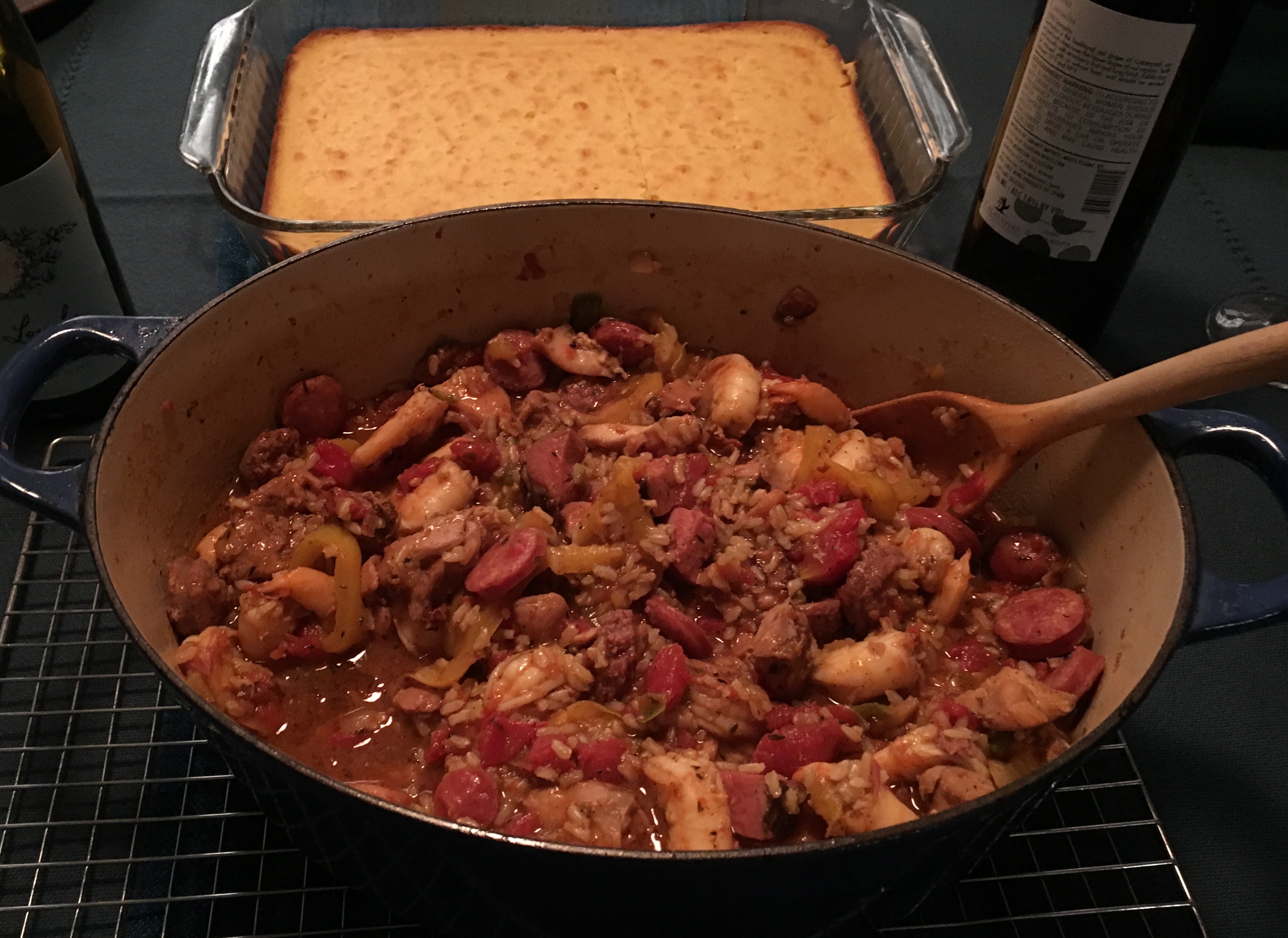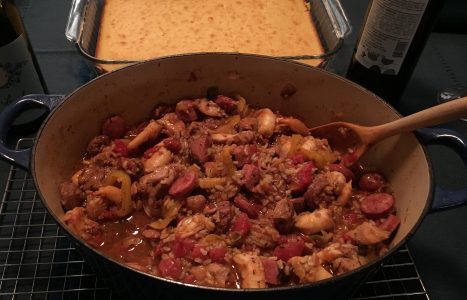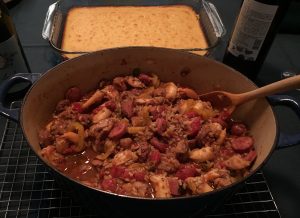Every year around mid-February I get a jones for jambalaya. The dish, not the song. This need is triggered by the barrage of news and promotions about New Orleans and its Mardi Gras scene—neither of which I have ever experienced. I’ve been to Louisiana—Lafayette—but not New Orleans. Despite that incongruity, the sounds of jazz, Blues and zydeco intermingled with the smells of smoked and spicy meats and seafood riding on warm, humid night breezes flowing in from the bayou sounds really good—especially after a couple of months in the icy grip of a Minnesota winter.
Southern Louisiana is a melting pot of different races and cultures that have come together harmoniously and produced strikingly unique new cultures. Its signature dish—jambalaya—is the perfect culinary expression of that pot. Jambalaya is a multicultural stew of smoke-cured Cajun meats spiced with the exotic European, African and Native American traditions called Creole. Cajun is country; Creole is jazzy. Making and eating jambalaya is a psychic escape from the Midwest winter. The smells of the smoked and spicy sausages, ham and shrimp bubbling up from a big iron pot conjure warm and humid places. It’s as atmospheric as reading a Dave Robicheaux mystery by James Lee Burke: all steamy and spooky. It transports me to Louisiana bayou country.
Jambalaya got its start as a New Orleans version of the classic Spanish rice dish, paella. While Spanish explorers were the first Europeans to see the Mississippi delta in 1519, 250 years would pass before Spain would leave its imprint on the city. Present-day Louisiana was named, claimed and settled by the French. A treaty in 1762 ceded the city and territory west of the Mississippi to Spain, which accounts for the Spanish influence on the city’s architecture and culture. Fifty years later another treaty returned the city and the territory to France, which promptly sold it to the United States. During their tenure Spaniards transformed the city and in their attempt at assimilation, tried to make their beloved paella. But saffron, a key paella flavoring, was not readily available. French, African and Native American influences transformed the rice dish into jambalaya. Apropos to its stew-like nature, the name “jambalaya” is a mashup of different cultural influences. Jambalaya may be a bastardization of the French a la jambon–“at or of the ham,” but it may also be from the French Provencal word for mish mash, jambalaia.
Like its Spanish precursor, and true to its more stew-like character, there is no one recipe for jambalaya. My version has evolved steadily over the years from a Fanny Farmer recipe and, I hope, improved as well. Jambalaya is a big dish with lots of ingredients including andouille and other Cajun sausages and ham, plus chicken, shrimp and, of course, rice. All of this is flavored up with appropriate Creole herbs and spices and the region’s culinary trinity of sautéed onion, celery and red bell peppers. With all these ingredients another key component for a good jambalaya dinner is a ready-to-party group of guests. We invited two couples to join us the Saturday after Mardi Gras: Kevin and Kathy (from s/v Special K) and longtime friends Nancy and Bob—who have sailed with us out of Kefalonia, Greece as well as the Caribbean.

Part of the reason for this grouping is the upcoming Women Who Sail adventure Julie, Kathy and Nancy are going on. Kathy and Nancy had never met but were connected not only by Julie, but another mutual friend. It was time they got together.
To get the party started, I put together a musical gumbo of Louisiana artists and songs that included Delta blues, New Orleans jazz, zydeco and, of course, Hank Williams’ anthemic ode to life on the bayou, Jambalaya. I also tracked down a bottle of Sazerac rye whiskey, Peychaud bitters and absinthe to make Sazerac Cocktails— a New Orleans original said to be the first “official” cocktail. Truly atmospheric.
To round out the meal, Julie made cornbread and I made maque choux (“mock shoe”), a Creole corn dish that nobody in our group of Northerners knew but that everybody liked. After the Sazeracs, the beverage selection was all over the board and included beer and wine: German Gewürztraminer and a Spanish Garnacha. Dessert included a rum cake made by Julie and strawberries dipped in chocolate, compliments of Kathy. We also poured a vintage bottle of zinfandel port from Praeger’s in Napa, CA. We drank the entire bottle!
All in all, the dinner was a success with plenty of laughter and massive consumption of victuals and libations. Around midnight our guests shuffled out of our ersatz New Orleans and into the cold reality of Minnesota in February.
Son of a gun we had big fun.


